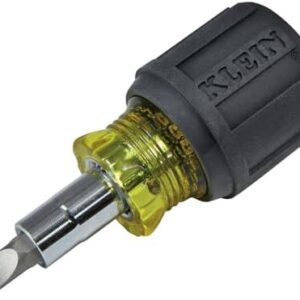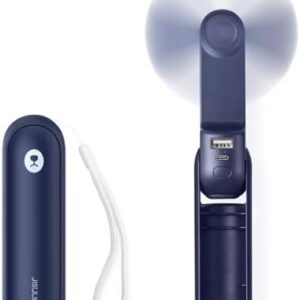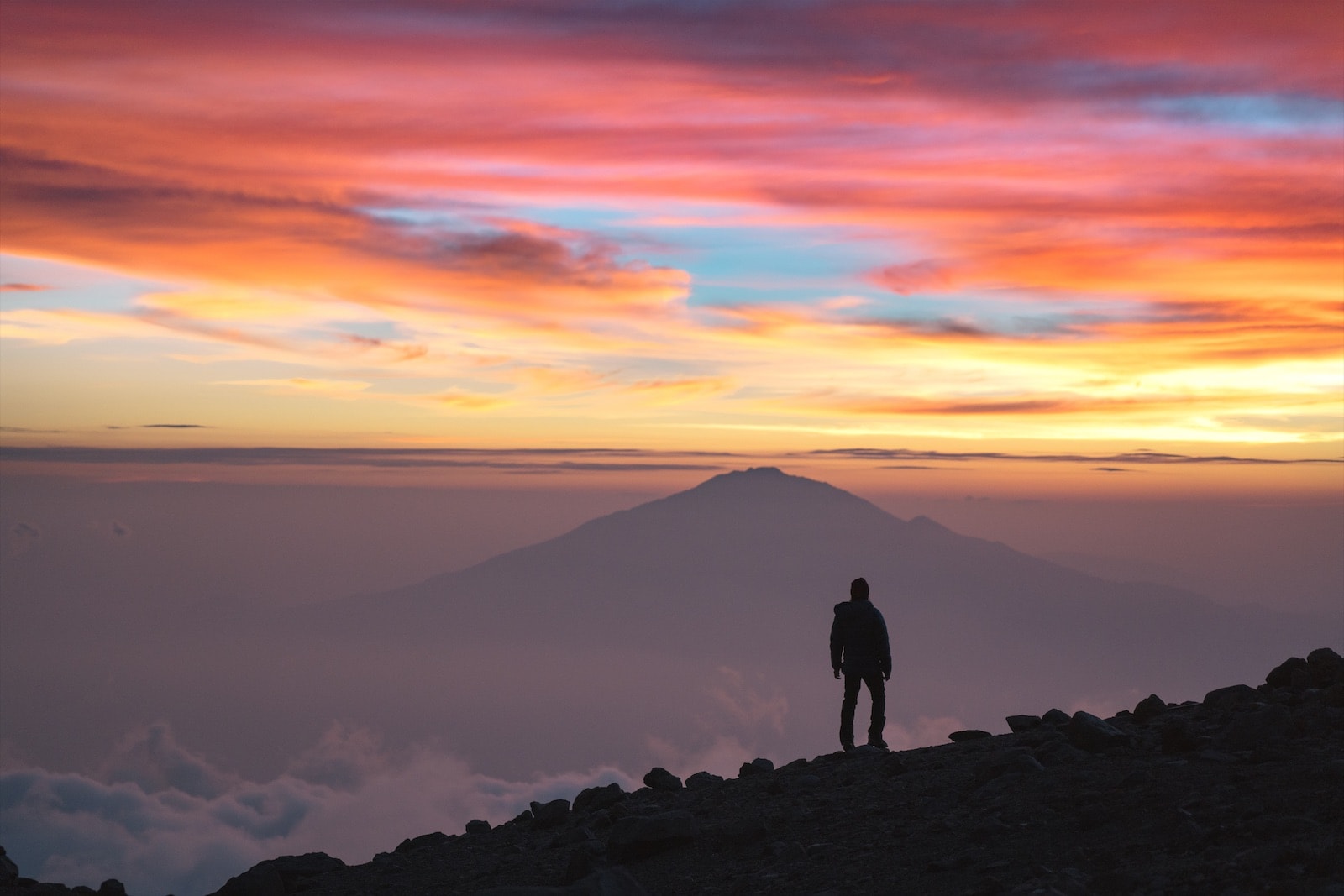Mount Kilimanjaro is Africa’s highest peak, soaring into the skies at 5,895 meters high. It’s also the tallest freestanding mountain in the world (meaning it’s not part of a mountain range), and it’s one of the Seven Summits.
If you’re eager to climb this snow-capped peak, I don’t blame you one bit—that’s a lot of bucket list items to tick off the list!
Mount Kilimanjaro is a dormant volcano, and it’s considered to be one of the most accessible major mountains to climb for anyone with a little bit of determination…but that doesn’t mean it’s easy. Preparedness is absolutely essential.
One of the things that will make your life easier? Knowing the best time to climb Kilimanjaro. In this article, you’ll learn everything you need to know about when you should hit the trail and how to set yourself up for success.
What to Know Before Your Kilimanjaro Trek
Before you begin your trek, it helps to know a little about Kilimanjaro National Park (where Mount Kilimanjaro is obviously located). The name “Kilimanjaro” itself is a bit of a mystery; it possibly means Mountain of Light, or maybe Mountain of Greatness…but no one really knows for sure.
Moshi is the closest town to Mount Kilimanjaro, and tends to be the starting point for both Tanzanian safaris and climbing trips up the mountain. From here you can gaze upon the snowy summit of Kilimanjaro with its glaciers shimmering above the clouds, and ready yourself for a spectacular journey.
Kilimanjaro is called a stratovolcano, which means a very large volcano made of rock, ash, and lava. It has three different cones (Kibo, Mawenzi, and Shira), with Kibo being the summit.
While the others are extinct, Kibo is actually dormant and may erupt again someday—but don’t worry, it last erupted 360,000 years ago, so it’s probably not going to happen again anytime soon.
It’s not possible to climb Kilimanjaro without a guide or small expedition, so do your homework beforehand. Pick a reputable tour company with a high success rate. You’re much more likely to have a successful summit if you’re being guided by skilled experts.
Which Route is the Best for Climbing Kilimanjaro?
There are actually seven different Kilimanjaro routes you can take to reach the summit of Uhuru Point. They all eventually converge into one route to reach the top, but each route is very different.
Here are some of the main routes for you to consider:
The Machame Route
The Machame Route is a popular route because although it’s one of the “shorter” ones (seven days), it has an excellent summit success rate of 60% (this means that 60% of climbers will reach the summit, mostly thanks to the extra time to acclimatize). The flip-side is that it’s also a very challenging route. The scenery is some of the best, and you’ll trek through the lush rainforest zone giving way to sweeping views over the mountain, so that kinda makes up for the struggle.
The Marangu Route
While the Machame Route is often called the “Whiskey Route,” the equally popular Marangu Route is referred to as the “Coca Cola Route” because it’s considerably easier. It’s less steep, and also shorter. However, because of its short length, the success rate isn’t as high. This route also has the option of sleeping in huts rather than tents.
The Lemosho Route
The Lemosho Route is longer (10 days) but easier for anyone with less trekking experience, and the scenery is just as beautiful as Machame. Since it’s not as popular, it’s also a quieter trek. However, the Lemosho Route is not the best route if you have time restraints.
The Rongai Route
This is the only route that approaches from Kenya’s side. Rongai has options for quicker (or slower) ascents, but with the opportunity to see wildlife like elephants and buffalo. You can hike this one in 6-8 days.
When is the Best Time to Climb Kilimanjaro?
The best time to climb Kilimanjaro all comes down to finding the best weather conditions for your trek along with figuring out your tolerance for a crowded climb during peak season. After all, over 30,000 people attempt climbing Mount Kilimanjaro every year! That’s a lot of foot traffic.
Fortunately, Kilimanjaro’s location near the equator means that this area does not have the extreme highs or lows in temperature like North American summers and winters, but there are definitely distinct dry and wet seasons.
Kilimanjaro Weather Month-by-Month
The warmest, driest months make an ideal time to summit. Take it from me, you don’t want to be scaling a mountain in a downpour while carrying a load of equipment.
Trekkers also avoid the rainy season due to safety issues. Landslides and interrupted routes can be detrimental to your ascent, and your body will take a beating in the wet onslaught.
Although you’re able to climb Kilimanjaro year-round, not all seasons are created equal. Let’s break it down throughout an entire year.
Mid December to March
Mid December/January through mid March are the warmest months for your journey, usually with clear skies in the mornings and evenings. It may rain sometimes throughout the day, but showers tend to be brief and warm. If you carry along some rain gear, you’ll be just fine.
There’s a good chance of snow being on the summit during this time as well, making for some awesome photography. I prefer this season for tackling treks like Mount Kilimanjaro: it’s technically still the “high season,” but it isn’t as busy with other hikers as later in the year.
March to June
The end of March to June is the long, rainy season and isn’t recommended for climbing Kilimanjaro during this time, unless you’re a very experienced hiker. Visibility is low; on the upside, you’ll have the mountain almost all to yourself. I’m not sure if that’s such a tradeoff if you can’t actually see anything. Plus the trail gets super muddy. Many guides will not even offer to take you on the trek during this time.
June to October
Mid June to October is when the coldest temperatures hit, so if you enjoy the crisp weather, this may be an ideal time for you. It’s super dry during this time so you don’t have to worry too much about rain.
From the middle of June to October is also the busiest season of all for climbing Mount Kilimanjaro, particularly on the Marangu and Machame routes, and especially since it’s summer holidays for North America and Europe.
November to Early December
This is the short rainy season on Kilimanjaro, with plenty of short rains in the afternoon, and isn’t a good time to be climbing. I suggest avoiding this time altogether.
Kilimanjaro’s Five Climate Zones
Mt Kilimanjaro has five different climate zones, which also affect your climb depending on the time of year. For example, the lower slopes are known as the Cultivation Zone because they’re used for farmland (including coffee and banana crops)—during the rainy seasons, rivers may form in the run-off from the rainfall.
Next, still in the lower altitudes, you’ll find yourself in the lowland Rainforest Zone which is dense and full of wildlife like monkeys and antelope. This zone provides good cover from the glaring sun when temperatures are high.
Vegetation starts thinning out in the Heath and Moorland Zone as you leave the rain forest, and this is when temperatures start to drop. The Alpine Desert Zone is dry and cold, and finally, the last zone is the Arctic Summit zone. It’s more barren and rocky near the top, but the views are unobstructed, especially with clear skies.
The Arctic Summit zone is where you’ll experience extremes and colder weather, as temperatures often drop below freezing year-round and bad weather is more common. But during the day you might experience temperatures over 95°F (95°C), with extreme radiation from the sun.
Knowing what to expect in each of these climate zones will help you prepare for a comfortable trek.
Kilimanjaro Full Moon Summits
If you can arrange your Kilimanjaro summit to happen during the full moon (occurring once a month), I strongly encourage you to do so!
The light from the full moon lights up Kilimanjaro’s peak and its glaciers, offering a spectacular, glittery view that you’ll remember for the rest of your life. Other than the magnificent moonlit display, the full moon also provides a well-lit path for your summit attempt (as long as the visibility is good with minimal cloud cover).
If you’re doing a full moon summit, you’ll want to book your guide well in advance of your full moon date as those dates tend to fill up quickly.
For a seven-day climb, you should leave five days before the full moon, but your guide or tour operator will know this anyway. They’ll be able to help you plan the right timing.
This also means you get a lot of people on the mountain for this climb. Whether you choose to summit during a full moon or not is entirely up to you, and either way you’ll love the experience. Just do your research beforehand to determine the exact full moon date.
New Moon Summits
Something to keep in mind on your Kilimanjaro trek if you’d like to do a full moon summit night: the ultra bright moon date can be very disruptive to sleeping, and you won’t get to experience the starry skies.
If you really want to experience the magic of starry African skies, do a new moon climb instead. Especially if you’re into time-lapse photography or night photography.
New Year’s Eve Kilimanjaro Climbs
Why not start off a new year by summiting Uhuru Peak? For some people, this is the best time to climb Kilimanjaro simply because you’ll reach the peak as the sun comes up on a new year.
There’s something symbolic about such a feat, especially since most New Year’s Eves are spent popping champagne bottles and getting boozy.
If you plan to climb Kilimanjaro this time of year, book in advance. As it turns out, trekking Kilimanjaro makes for a popular New Year’s resolution.
Kilimanjaro Safety & Trail Conditions
It’d be remiss to talk about climbing Kilimanjaro without actually mentioning safety and trail conditions along the way, especially considering this is the tallest mountain in Africa.
And, despite Kilimanjaro being one of the most accessible mountains out there for the average joe, it doesn’t mean it’s easy. You will 100% encounter some challenges along the way. It’s all part of the journey, but let’s keep the journey safe.
Here are some things to keep in mind:
- If you’re an inexperienced climber, stick to climbing Kilimanjaro in the dry season. Slippery trails and mud will not be easy for you to navigate if you’ve never really encountered this kind of terrain before. You’ll be less stressed out during the final ascent, and way more comfortable.
- Hire a reputable guide. Kilimanjaro guides take your safety very, very seriously and they will not put you in harm’s way. Remember, the most experienced guides have done this hundreds of times! Your guides will keep a keen eye on the weather forecast and any other dangerous conditions that may pop up. Do your research beforehand.
- Summit at night. Most guides recommend tackling the seven hour summit just after midnight, so you’ll be there when the sun comes up. It’s also easier to climb the mountain when the rocky pathway is still frozen, and then you’ll have a full day to descend to safer altitudes. Yes, it’s hard to imagine climbing after midnight, but this is in fact the best way to do it!
Altitude on Mt Kilimanjaro
Climbing Africa’s highest peak means you’ll be ascending 5,895 meters…and the effects of altitude usually kick in around 3,000 metres (and sometimes as low as 2,500 metres for certain people).
Unless you’re an experienced climber, your route is designed in such a way that you have time to acclimatize as you ascend the mountain.
However, altitude sickness is still the most common thing that prevents people from summiting.
If you’ve never dealt with altitude sickness, consider yourself lucky; it feels quite a bit like a hangover with headaches, fatigue, nausea, and dizziness. This is why people who are prone to altitude sickness tend to go the longer routes (like the Lemosho Route), because a more gradual ascent means you have time to acclimatize.
Summing Up the Best Time to Climb Kilimanjaro
Let’s sum up the best time to Climb Kilimanjaro.
From January to early March and then June through October are the busiest times to be on the mountain due to the most favorable weather. But even then, it’s mostly the Machame and Marangu routes that get the most traffic. You can actually have a more pleasant, relaxed experience on one of the less busy routes like Rongai or Lemosho, where you won’t be competing for the best vistas (and there’s plenty of amazing views).
But the shoulder seasons (just before and after the rainy season) are also excellent times to climb Kilimanjaro with fewer crowds, if you don’t mind some light afternoon rains and sometimes cold temperatures. With the right travel gear, this shouldn’t be an issue—you’ll be perfectly comfortable as long as you’re nice and dry.
The Rongai Route or the Northern Circuit on the northern slopes of the mountain offers the most shelter from the rainfall during the short rainy season if you’re absolutely set to climb Kilimanjaro during this time.
No matter when you plan on climbing Kilimanjaro, When you’re standing at Uhuru Peak on top of Kilimanjaro watching the sun roll across the clouds, with the glacial ice shimmering in the early morning light, it’ll all be worth it.





